Two single-ended output transducers Tr1 and Tr2 are powered from the same power supply and their output is connected to shielded twisted pair. Their ground and the shield connected at the source ground which is recommended. The transducers' grounds are internally connected to their DC power ground. The transducers are floating with respect to earth and they are grounded on the data-acquisition side to AIGND. The AIGND is tied to the earth. Below is the drawing for the system:
The data-acquisition device multiplexes each differential inputs one by one by one and establishes the connection to the inAmp as shown above.
So far so good, but when I looked at this configuration carefully I noticed a loop following the points A-->B-->C-->D--A.
My question is, this is not a ground loop since the source is not earth grounded in source side. But is this loop still problematic? If so each traducer should use a separate power supply?
edit for a comment:

